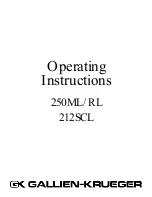
42
•
Guide to Electrophysiological Recording
MultiClamp 700A Theory and Operation, Copyright 2000, 2001 Axon Instruments, Inc.
Perforated-patch Recording
With some cells it has proven nearly impossible to go whole cell without loss of seal.
If you have one of those cells, you might consider the “perforated patch” technique. In
this approach, the very tip of the pipette is filled with a normal filling solution and the
rest of the pipette is backfilled with the same filling solution to which 120-150
µ
g/ml
of the pore-formers Nystatin, Amphotericin B or Gramicidin [from a stock solution of
30 mg/ml in DMSO] has been added (Rae
et al
., 1991; Yawo & Chuhma, 1993).
Gramicidin has lower conductance than the other two, but it offers the advantage that it
is impermeable to chloride ions, which may be important in some applications (Ebihara
et al
., 1995). A cell-attached seal is then formed on the cell. Over a 5-30 minute time
period, myriad tiny cation-selective, voltage-independent channels are inserted in the
membrane patch. These channels allow small ions to equilibrate between the cell and
the pipette allowing the cell to be voltage clamped through the open channels. Since
substances as large as, or larger than, glucose will not permeate these channels, cell
contents are not washed out as in standard whole-cell techniques. This is an advantage
or a disadvantage, depending on the experiment. A distinct advantage is the
maintenance of the intracellular environment that might influence conductances. With
the perforated patch technique, a rise in whole-cell capacity transients will be observed
as the compound partitions into the cell, as shown in Figure 3.3. The Membrane Test
feature of Clampex (v. 7 and higher) allows graphically monitoring the gradual rise in
capacitance (and decrease in Rs) as pores are formed in the patch membrane.
















































